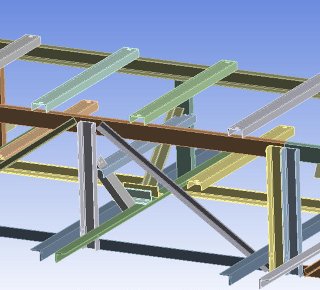The application of computer-aided engineering (CAE) enables the virtual development of machines, components and systems within a very short time. In this process, designs and constructions are virtually "tested" by means of corresponding simulations without the need to build an expensive prototype.
Definition of CAE (Computer Aided Engineering)
Computer Aided Engineering refers to both hardware and software solutions that are used for the computer-aided simulation of physical problems in the development of machines and systems. These programs use 3D models of components and mathematical model systems to generate an approximate numerical solution. In this way, for example, one calculates stresses arising from the action of various forces, but also magnetic fields and heat quantities. In practice, the CAE application results above all in enormous time and cost savings.
Examples for applications of Computer Aided Engineering
The procedure for the application of computer aided engineering is initially similar, irrespective of the physical phenomena to be investigated. Usually, the 3D design models are first simplified and prepared for transfer to a corresponding computational model.

Finite Element Method (FEM)
A classic application is, for example, the design and development of components. CAE is used in different variants to test static or dynamic loads in advance. For example, a selection of different materials for a specific component can be tested for sufficient strength in later operation.
A prominent example of this type of use is the finite element method FEM, for determining the stress distribution under the action of loads in components. In this way, both the design and the use of the optimum materials are optimized before a prototype is created.
computational fluid dynamics (CFD)
Another important area of a CAE application is computational fluid dynamics, also known as CFD. In other words, CFD enables the simulation of flow processes. These describe, among other things, the behavior of liquids as well as gases and are used especially for naturally occurring processes. Examples include the study of weather phenomena, the measurement of aerodynamics in the automotive and aviation industries, or the flow behavior of water or oil in pipe systems.
Injection moulding simulation (Mold flow)
With an injection molding simulation, we can map the manufacturing process of your injection molded part. This makes it possible to draw conclusions about the optimal condition of the mould, the position of the injection points and other relevant process parameters. Shrinkage, warpage, air inclusions, as well as other possible defects that occur during the injection molding process can thus be largely identified and avoided. In practice, this saves considerable costs if the parameters relevant to the construction of the mold are determined accordingly by prior simulation.
Kinematics and dynamics of multibody systems
The so-called multi-body simulations are used to determine kinematic and dynamic interactions of systems with multiple connected components. This CAE application can involve rigid or flexible bodies. Therefore Multibody simulation is used, for example, in fields such as biomechanics, particle simulation and robotics. Here, too, simulation is primarily used to rule out expensive prototype production and subsequent damage.
On our pages you will learn how to use CAE- Services ignite the turbo for your product development process.
Are you curious ?
Inform yourself about our complete range of services and contact us !